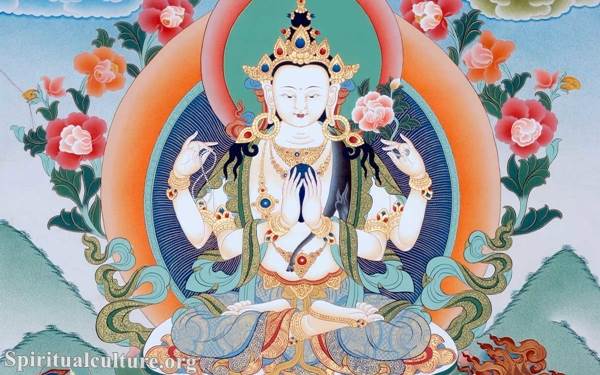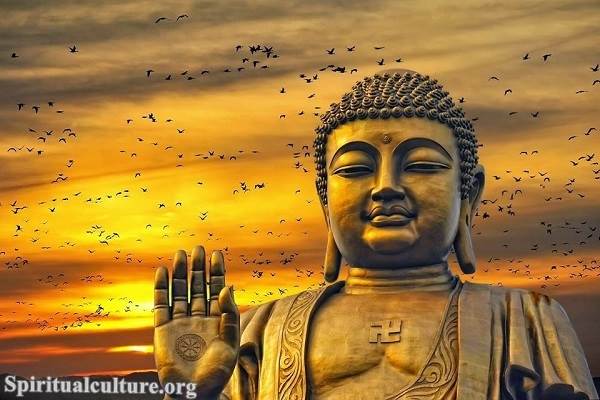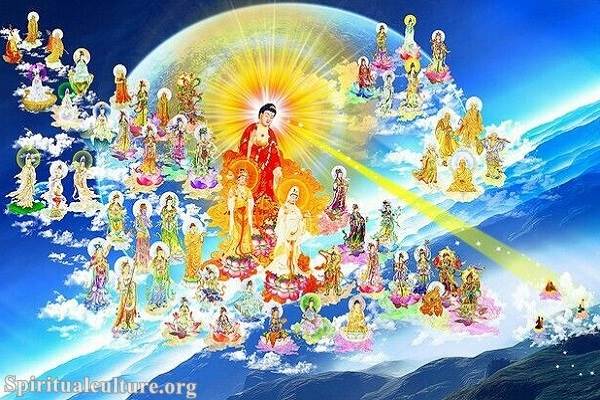Who is Bodhisattva?
In Buddhism, Bodhisattva is someone who has achieved a high level of spiritual enlightenment but chooses to remain in the physical world to help others reach enlightenment as well.
The term “bodhisattva” literally means “enlightenment being” or “one whose being is enlightenment.”
The most well-known bodhisattva in Mahayana Buddhism is probably the historical Buddha, Siddhartha Gautama, who is considered to be a bodhisattva because he attained enlightenment but chose to remain in the world to teach others. There are many different bodhisattva figures in Mahayana Buddhism, each with its own unique characteristics and attributes. Some of the most well-known bodhisattvas include:
– Avalokiteshvara, the bodhisattva of compassion
– Manjushri, the bodhisattva of wisdom
– Tara, the bodhisattva of compassion and protection.
Bodhisattvas are often depicted in Buddhist art and literature as figures who are engaged in a wide variety of activities, from teaching the Dharma to helping those in need. Some of the most well-known bodhisattvas in Mahayana Buddhism include Avalokiteshvara, associated with compassion, and Manjushri, associated with wisdom.
In Theravada Buddhism, the term bodhisattva is not used, but the concept of one who aspires to become a Buddha is equivalent to the Mahayana concept.
Bodhisattva meaning
In Mahayana Buddhism, a bodhisattva is someone who has taken a vow to achieve enlightenment for the sake of all beings and is actively working towards that goal through various practices and activities. The bodhisattva path involves developing compassion and wisdom to be able to help others effectively.

The ultimate goal of a bodhisattva is to attain Buddhahood, a state of perfect enlightenment in which one is able to understand the true nature of reality and is able to help others do the same. Along the way, bodhisattvas work to overcome their own personal obstacles, such as greed, hatred, and ignorance, and to develop virtues such as generosity, patience, and wisdom.
In addition to the ideal of the bodhisattva, many Mahayana Buddhist traditions also have specific practices and rituals associated with the bodhisattva path. For example, in the Lotus Sutra, one of the key Mahayana sutras, it is said that by reciting the sutra, one can become a bodhisattva and ultimately achieve Buddhahood. Similarly, in the Pure Land tradition, the practice of reciting the name of the Buddha Amitabha is said to be a way to be reborn in his pure land, where one can then more easily achieve enlightenment.
Bodhisattva vows are also considered an important step in the path. The traditional Mahayana bodhisattva vow includes taking responsibility for the liberation of all sentient beings, refraining from any action that would cause harm, and cultivating the perfections (paramita) of generosity, ethics, patience, exertion, meditation, and prajna.
Bodhisattvas are considered to be a source of inspiration and guidance for those who are following the Buddhist path. They are seen as powerful figures who have overcome obstacles and developed the qualities necessary to help others do the same.
It’s also worth noting that the concept of the bodhisattva is not limited to Buddhism, and can be found in other spiritual traditions as well, such as Jainism, where the term ‘Bodhisattva’ is used to refer to a person who is on the path to liberation.
Bodhisattva vow
The Bodhisattva vow is a commitment to work towards the ultimate goal of Buddhahood for the benefit of all beings rather than just for oneself. The vow is based on the belief that all beings have the potential to become enlightened and that by working towards one’s own enlightenment, one can help others do the same.
Taking the Bodhisattva vow is considered a significant step on the path to becoming a Bodhisattva, a being who has attained enlightenment and works to help others do the same. The vow is often taken during a ceremony led by a Buddhist teacher or monk and is seen as a formal declaration of one’s intention to work towards the enlightenment of all beings.
The specific wording of the vow may vary depending on the tradition. Still, it generally includes a commitment to develop compassion and wisdom, work for the benefit of all beings, and cultivate the qualities of a Bodhisattva. It is also a reminder to practice the six perfections: generosity, ethics, patience, effort, concentration, and wisdom.
It is important to note that taking the Bodhisattva vow does not mean that one has already achieved the state of a Bodhisattva, but rather it is a commitment to strive for it and to engage in the practices that will lead to it.
The Bodhisattva vow is an ongoing commitment, and those who take it are expected to continue to strive for the enlightenment of all beings throughout their lifetime. This includes engaging in practices such as meditation, ethical conduct, and cultivating compassion and wisdom.
In some traditions, those who take the Bodhisattva vow are given a set of specific practices to engage in, such as the practice of the six perfections (generosity, ethics, patience, effort, concentration, and wisdom) or the practice of the four immeasurables (loving-kindness, compassion, empathetic joy, and equanimity).
It is also common for those who take the Bodhisattva vow to receive guidance and support from a spiritual teacher or mentor, who can provide guidance on the practices and offer support and encouragement on the path to enlightenment.
It is worth noting that the Bodhisattva vow is not only for monks or ordained individuals; laypeople can also take the vow and strive for enlightenment for the benefit of all beings.
In summary, the Bodhisattva vow is a commitment to strive for the enlightenment of all beings and to engage in practices that will lead to that goal. It is considered a significant step to becoming a Bodhisattva and an ongoing commitment throughout one’s lifetime.
How to identify a Bodhisattva?
In Buddhism, it is said that a Bodhisattva is a being who has developed the qualities of compassion and wisdom to such a degree that they have the ability to achieve enlightenment but chooses to remain in the cycle of rebirth (samsara) to assist others in their path to enlightenment.
In terms of physical characteristics, Bodhisattvas are often depicted in art and literature with elongated ears, which symbolize their ability to hear the cries of suffering beings. They are also often depicted with a serene and compassionate expression, reflecting their inner state. They may also be depicted with specific hand gestures (mudras), which are symbolic of different aspects of their enlightened nature. For example, the dhyana mudra symbolizes meditation and concentration, and the varada mudra symbolizes charity and compassion.
In terms of objects, a Bodhisattva may be depicted holding a lotus flower, which symbolizes their enlightenment and purity, and a begging bowl, which symbolizes their detachment from material possessions. They are also often depicted with various symbols, such as the sword of wisdom and the golden fish, which symbolize their ability to cut through ignorance and their freedom from the cycle of death and rebirth.
It is important to note that the physical characteristics and symbols associated with Bodhisattvas are conventions in art and not necessarily definitive criteria for identifying a Bodhisattva. The true nature of a Bodhisattva is not something that can be determined by outward appearances but rather by the development of their inner qualities of compassion and wisdom.



